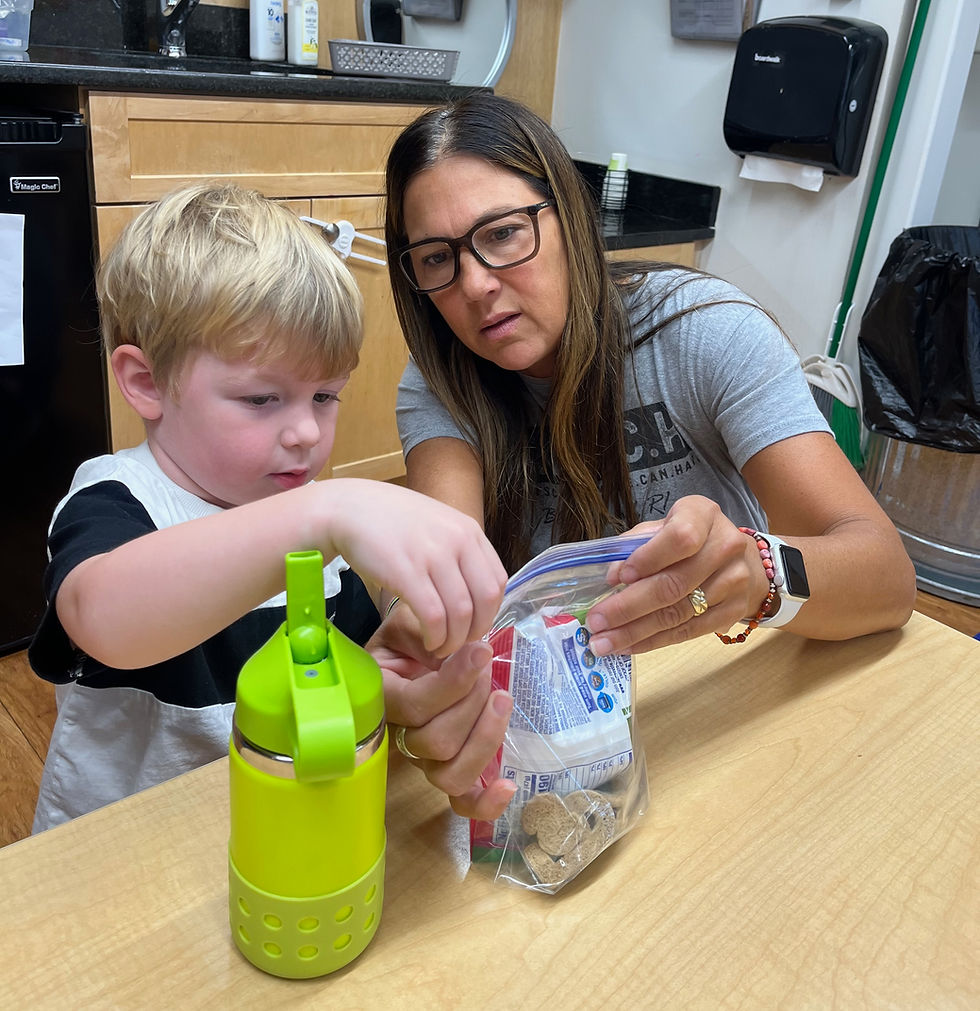Fostering Belonging in the Classroom
- Learning Community
- Oct 13
- 3 min read
Updated: Nov 5
“Can I tell you something?” a Kindergarten friend said to me as I sat down next to her while she was painting. “I’m so happy to be back at school.” Her comment brought a big smile to my face. It was only the second day of school and it felt so good to see a child already settled and feeling so at home in her classroom. Wouldn’t it be wonderful if every child felt this way on their second day of school?
The truth is that the transition back to school, or to school for the very first time, is a big deal for children. Personality, temperament, social-emotional development, and familiarity with the environment each have a role to play in a child’s adjustment to this change in routine. At LCDS, we respect that the start of a new school year can be unsettling for young children; therefore, everything we do is intentionally designed to help them feel secure, safe and seen in the classroom.
Following Predictable Routines: When our friends arrive each morning, teachers greet them by
name and welcome them to the day. Children place their belongings in personalized cubbies

and wash their hands before choosing an area of the classroom to explore. Young children thrive when they know what to expect and this predictable routine gives them an action plan as soon as they enter the classroom. The morning routine provides a bridge for the grown ups, too. A few weeks ago, I passed by a father and daughter enjoying a few minutes together in our Common Area before the classroom doors opened. “When we go into the classroom,” I heard him say to her, “you will hang up your bag and wash your hands and then I’m going to say goodbye.” Knowing just what would happen when the classroom doors opened gave both of them a roadmap to follow as they anticipated parting ways.
Making Independent Choices: Each morning, teachers thoughtfully set up a wide variety of

engaging materials for their students to explore. Sensory-rich activities are grounding for
young children and can help reduce the stress of the transition from home to school. The rhythm of most mornings includes an extended period of free choice either in the classroom or out on the playground which allows children to self-select the type of play that best suits their needs as they ease into the day. Water or sand play, playdough, art materials, blocks, books, dramatic play - there’s something for everyone and the freedom to make their own choices reaffirms for children that this space belongs to them.
Creating Community: The early days and weeks are about so much more than simply learning the rules and routines of a new classroom. The primary purpose for each activity, game or

introduction is to foster a sense of community. Circle times include an opportunity to sing together and greet each child by name, highlighting that each individual is an important member of the classroom family. Games like Memory Match with the children's faces or Who Stole the Cookie from the Cookie Jar? provide additional opportunities for our young friends to learn one another's names in a playful way. Teachers also sit with them during snack and lunch, modeling conversation and drawing connections between the children. In a Threes classroom the other day, one child turned to a friend sitting next to him at lunch and said, “We have a connection, we both have blueberries.” This statement led to a longer conversation with the two comparing what other items were in their lunchboxes.
Organic moments like that lunchtime conversation happen when the classroom environment is rich with opportunities for children to feel safe, confident and empowered. Developmentally appropriate routines, classroom set up, intentional activities, and thoughtful conversations all work together to send the message, “This is your space and you belong here!”
Let’s keep learning together,
Andrea



